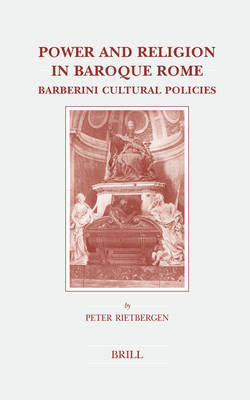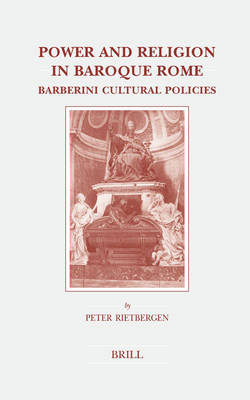
Je cadeautjes zeker op tijd in huis hebben voor de feestdagen? Kom langs in onze winkels en vind het perfecte geschenk!
- Afhalen na 1 uur in een winkel met voorraad
- Gratis thuislevering in België vanaf € 30
- Ruim aanbod met 7 miljoen producten
Je cadeautjes zeker op tijd in huis hebben voor de feestdagen? Kom langs in onze winkels en vind het perfecte geschenk!
- Afhalen na 1 uur in een winkel met voorraad
- Gratis thuislevering in België vanaf € 30
- Ruim aanbod met 7 miljoen producten
Zoeken
€ 245,95
+ 491 punten
Omschrijving
In ten chapters, partly case-studies, this monograph analyzes the (new) ways in which cultural manifestations were used to create the necessary preconditions for (religious) policy and power in the Rome of Urban VIII (1623-1644). It was the intensified interaction between culture and power-politics that created what we now call 'the Baroque'. Based on a rich variety of, hitherto largely unexplored, primary sources, the book addresses the basic issues of papal power in the post-Tridentine period. It does not study actual papal politics, but rather the cultural forms that were essential to the representation and legitimatization of the papacy's power, both secular and religious and that (co-)determined the effectiviness of papal policy. Precisely during Urban's long pontificate, the manifold, always imaginative and often unexpected uses of power representation became, in the end, not so much a series of cultural forms as, in a sense, the structure of early modern (Roman) society.
Specificaties
Betrokkenen
- Auteur(s):
- Uitgeverij:
Inhoud
- Aantal bladzijden:
- 455
- Taal:
- Engels
- Reeks:
- Reeksnummer:
- nr. 135
Eigenschappen
- Productcode (EAN):
- 9789004148932
- Verschijningsdatum:
- 23/12/2005
- Uitvoering:
- Hardcover
- Formaat:
- Genaaid
- Afmetingen:
- 155 mm x 235 mm
- Gewicht:
- 933 g

Alleen bij Standaard Boekhandel
+ 491 punten op je klantenkaart van Standaard Boekhandel
Beoordelingen
We publiceren alleen reviews die voldoen aan de voorwaarden voor reviews. Bekijk onze voorwaarden voor reviews.









